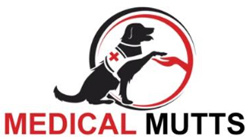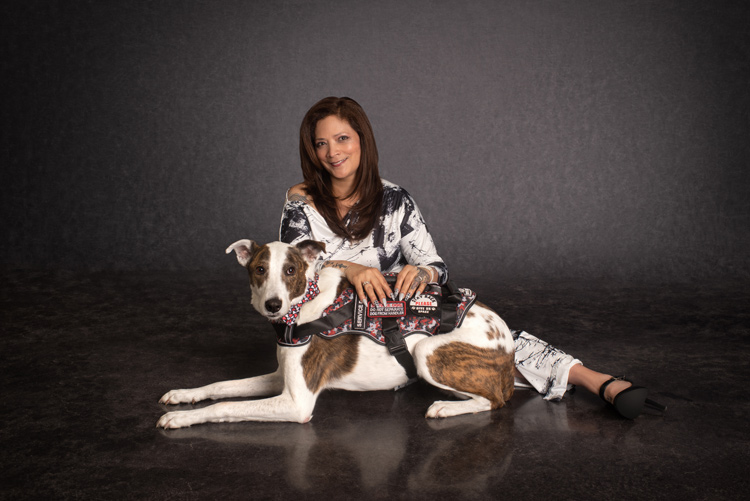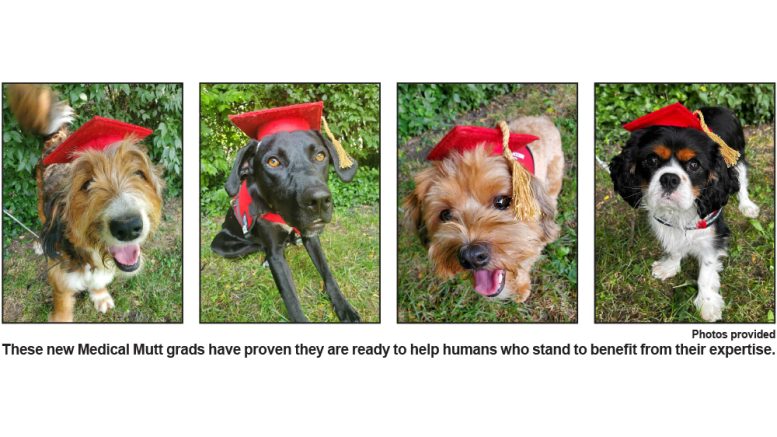Turning shelter dogs into Medical Mutts
By STU CLAMPITT
news@readthereporter.com
Medical Mutts Service Dogs turns dogs in animal shelters across the country into furry little life savers by training them to be medical service alert dogs. The people they have paired with just the right mutt hale not only from Hamilton County, but from across the U.S. and Canada.
 The Reporter spoke to Medical Mutts Director of Development Liz Boskovich about what makes a good medical mutt and what these dogs can do.
The Reporter spoke to Medical Mutts Director of Development Liz Boskovich about what makes a good medical mutt and what these dogs can do.
“We go around the country rescuing shelter dogs and train them to become medically alert service dogs for people with seizures, epilepsy, PTSD, anxiety, and autism,” Boskovich said. “We also have some mobility dogs for people with MS and we’re now moving into alert dogs for migraines and allergies.”
For a dog to become a Medical Mutts candidate, it must look friendly, be the right age for training, and be what Boskovich calls a “Velcro dog.”
“They have to have what we call Velcro-like qualities,” Boskovich said. “A dog that’s going to stick by you. A dog that’s going to follow you to the bathroom. A dog that’s really going not to leave your side. We want them to be Velcro dogs and we want them to be happy service dogs – working dogs – who will be happy in their profession.”
While they do tend to train larger dogs, some of the Medical Mutts dogs are smaller than you might think.
“We do have some smaller dogs for psychiatric patients for people with PTSD, anxiety, or autism,” Boskovich said. “But the larger the dog then the more they can do, particularly if someone has mobility issues. If someone has a seizure or someone has epilepsy, they can get to them faster and do more things like call for help. If somebody has a button that is attached to 911, any size dog could do that.”

Nancy with her dog Valentine, the Medical Mutt she says changed her life. (Photo provided)
For people who might need emergency medication, only the larger dogs will do, though. It would be hard for a smaller dog to get to medications that are kept on a table and carry them to their humans, but larger dogs can be trained to do this job just fine.
Perhaps the most surprising thing Medical Mutts does it train dogs to alert their humans before an episode begins.
“We actually have a dog here now that can sense a seizure up to an hour before the person has it,” Boskovich said. “It’s all scent-based work. President, Founder and CEO Dr. Jennifer Cattet was able to work with a group in Europe to prove beyond a shadow of a doubt that before somebody has a seizure, they let off a scent. Just like somebody lets off a scent when their glucose drops or it gets too high or someone’s about to have a panic attack. It’s a universal scent that someone lets off.”
According to Boskovich, shelter dogs are in no way inferior to an expensive pure-bred animal when it comes to this kind of work.
“We’ve gotten a lot of pushback saying, ‘You know these shelter dogs; they can’t do that. You have to have a purebred from a breeder to be able to do that,’” Boskovich said. “And we’ve proven that is just not true. These dogs are worthy of this chance, and they are just as smart and just as purebred dog.”
You can learn more about Medical Mutts online at medicalmutts.org.

